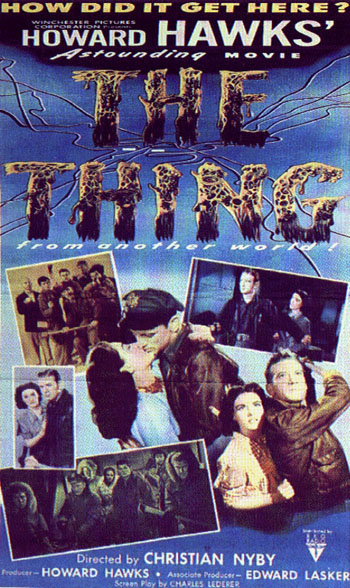 |
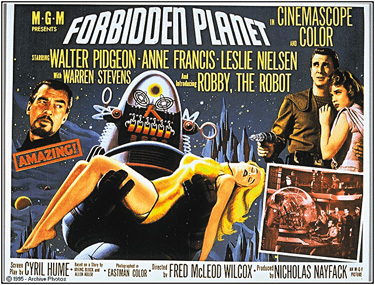 |
 |
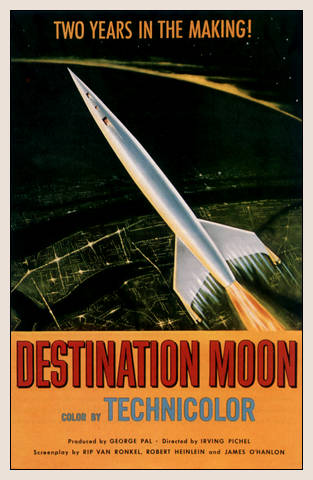 DESTINATION MOON
DESTINATION MOON
- Rating

- Film Production Credits
-
Release Date: 1950 Produced by: George Pal Directed by: Irving Pichel Other: Novel by Robert A. Heinlein - Cast of Characters
-
John Archer Jim Barnes Warner Anderson Dr. Charles Cargraves Tom Powers General Thayer Dick Wesson Joe Sweeney Erin O'Brien-Moore Emily Cargraves - Synopsis and Commentary
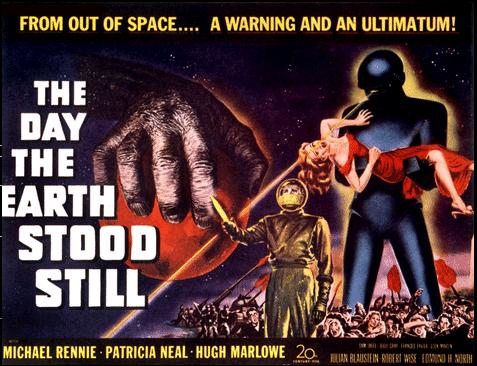 THE DAY THE EARTH STOOD STILL
THE DAY THE EARTH STOOD STILL
- Rating

- Film Production Credits
-
Release Date: 1951 Produced by: 20th Century Fox Directed by: Robert Wise Other: - Cast of Characters
-
Michael Rennie Klaatu (aka "Carpenter") Patricia Neal Helen Benson Hugh Marlowe Tom Stevens Sam Jaffe Prof. Jacob Barnhardt Billy Gray Bobby Benson - Synopsis and Commentary
 THE THING FROM ANOTHER WORLD
THE THING FROM ANOTHER WORLD
- Rating

- Film Production Credits
-
Release Date: 1951 Produced by: Howard Hawks Directed by: Christian Nyby Other: From a short story by
John W. Campbell - Cast of Characters
-
Kenneth Tobey Captain Patrick Hendry Margaret Sheridan Nikki Robert Cornthwaite Dr. Carrington Douglas Spencer Ned "Scotty" Scott James Young Lieutenant Eddie Dykes John Dierkes Dr. Chapman Eduard Franz Dr. Stern William Self Corporal Barnes James Arness The Thing (or " ? ") - Synopsis and Commentary
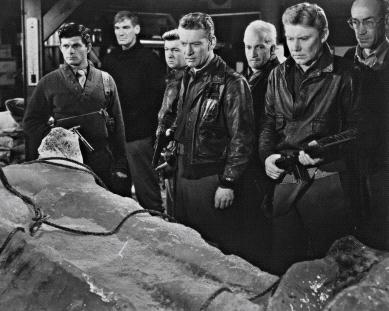
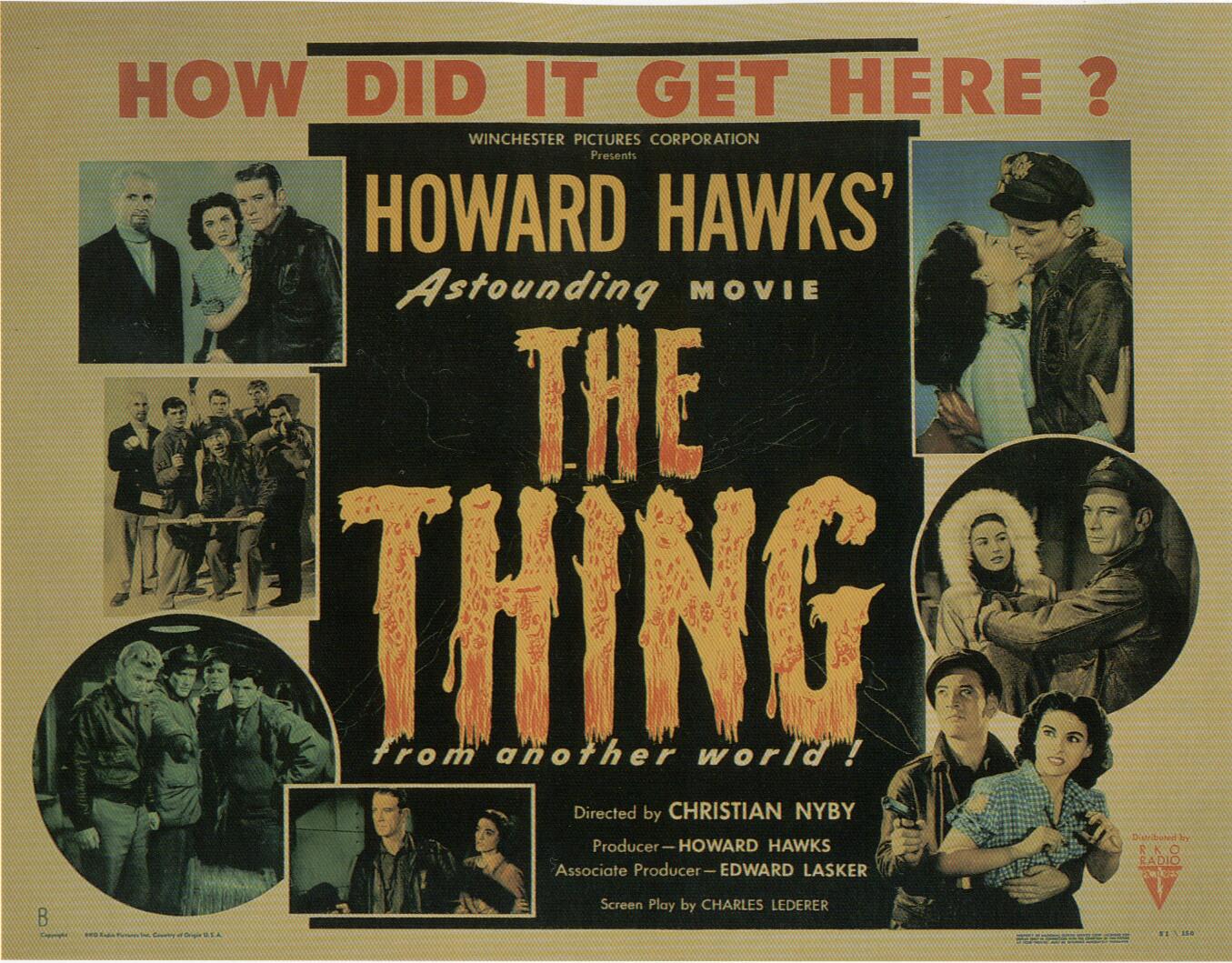
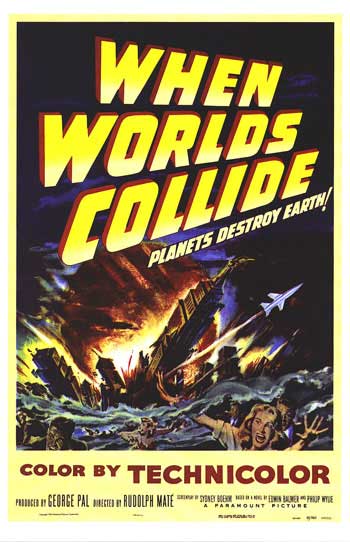 WHEN WORLDS COLLIDE
WHEN WORLDS COLLIDE
- Rating

- Film Production Credits
-
Release Date: 1951 Produced by: Paramount Pictures (George Pal) Directed by: Rudolph Mate' Other: Novel by Edwin Balmer - Cast of Characters
-
Richard Derr David Randall Barbara Rush Joyce Hendron Peter Hanson Dr. Tony Drake, MD John Hoyt Sydney Stanton Larry Keating Dr. Cole Hendron Judith Ames Julie Cummings Stephen Chase Dr. George Frye - Synopsis and Commentary
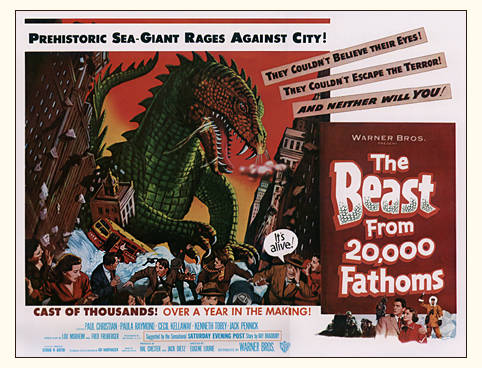 THE BEAST FROM 20,000 FATHOMS
THE BEAST FROM 20,000 FATHOMS
- Rating

- Film Production Credits
-
Release Date: 1953 Produced by: Warner Brothers Directed by: Eugene Lourie' Other: Special Effects by
Ray Harryhausen - Cast of Characters
-
Paul Hubschmid Prof. Tom Nesbitt Paula Raymond Lee Hunter Cecil Kellaway Prof. Thurgood Ellson Kenneth Tobey Col. Jack Evans Lee Van Cleef Cpl. Stone - Synopsis and Commentary
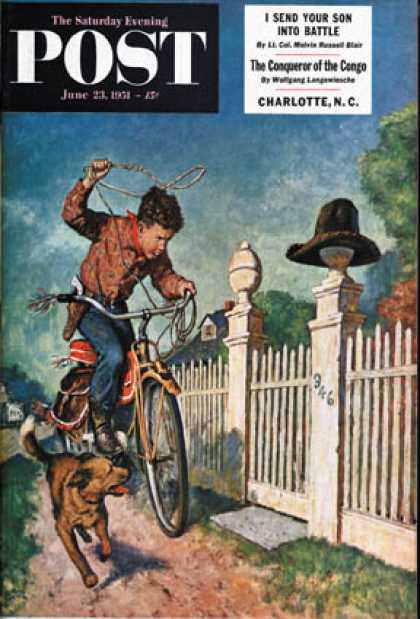
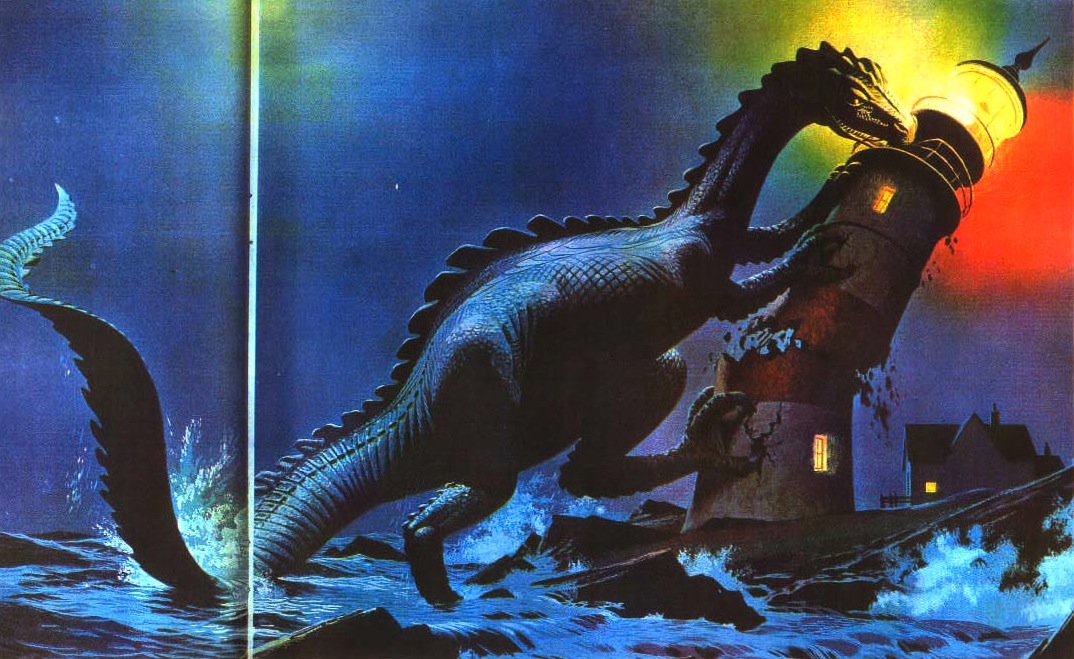
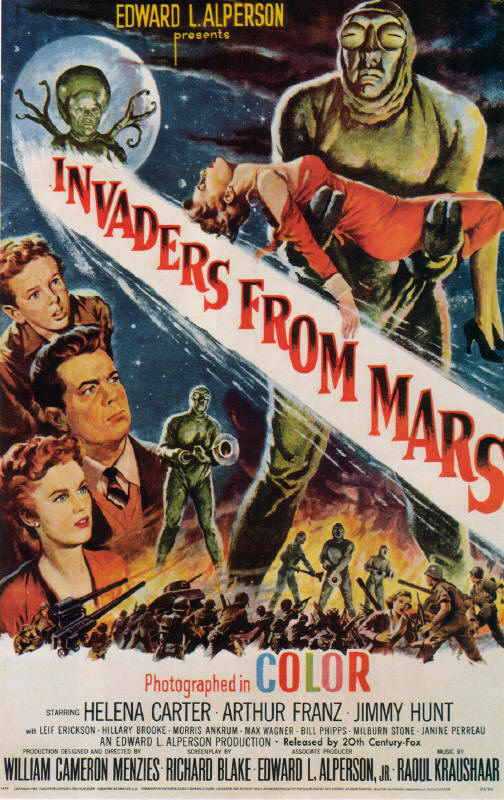 INVADERS FROM MARS
INVADERS FROM MARS
- Rating

- Film Production Credits
-
Release Date: 1953 Produced by: National Pictures Corp. Directed by: William Cameron Menzies Other: Music by Mort Glickman - Cast of Characters
-
Helena Carter Dr. Pat Blake Arthur Franz Dr. Stuart Kelston Jimmy Hunt David Maclean Leif Erickson George Maclean Hillary Brooke Mary Maclean Morris Ankrum Col. Fielding - Synopsis and Commentary
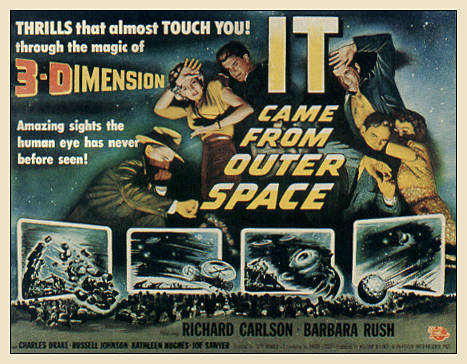 IT CAME FROM OUTER SPACE
IT CAME FROM OUTER SPACE
- Rating

- Film Production Credits
-
Release Date: 1953 Produced by: Universal International Pictures
(William Alland)Directed by: Jack Arnold Other: Short Story by Ray Bradbury - Cast of Characters
-
Richard Carlson John Putnam Barbara Rush Ellen Fields Charles Drake Sheriff Matt Warren Joe Sawyer Frank Daylon Russell Johnson George - Synopsis and Commentary
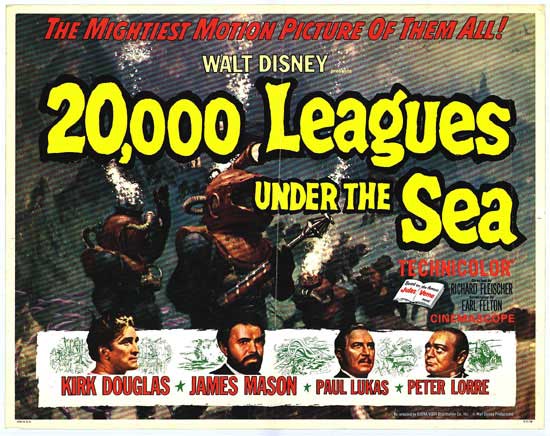 20,000 LEAGUES UNDER THE SEA
20,000 LEAGUES UNDER THE SEA
- Rating

- Film Production Credits
-
Release Date: 1954 Produced by: Buena Vista Pictures
(Walt Disney)Directed by: Richard Fleischer Other: From the novel by
Jules Verne - Cast of Characters
-
James Mason Captain Nemo Kirk Douglas Ned Land Paul Lukas Prof. Arronax Peter Lorre Conseil - Synopsis and Commentary
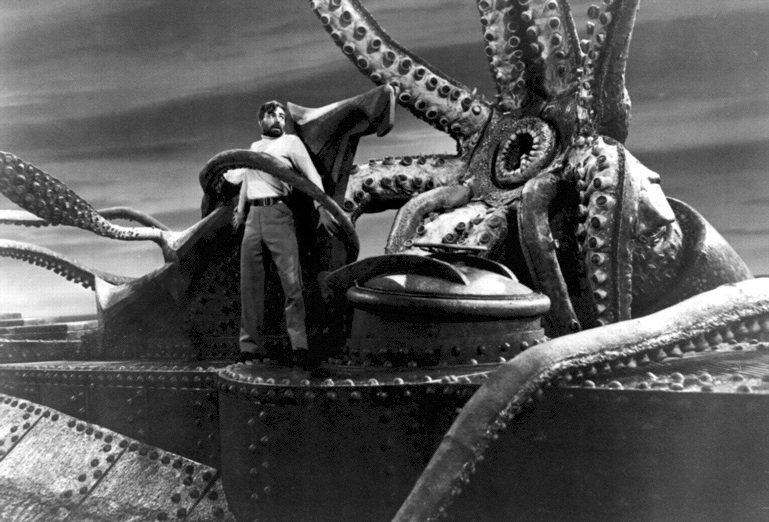
 CREATURE FROM THE BLACK LAGOON
CREATURE FROM THE BLACK LAGOON
- Rating

- Film Production Credits
-
Release Date: 1954 Produced by: Universal International Pictures (William Alland) Directed by: Jack Arnold Other: Special makeup effects by Bud Westmore - Cast of Characters
-
Richard Carlson David Reed Julia Adams Kay Lawrence Richard Denning Mark Williams Whit Bissell Dr. Thompson Nestor Paiva Lucas Antonio Moreno Carl Maia Ricou Browning The Creature (underwater sequences) Ben Chapman The Creature (land sequences) - Synopsis and Commentary
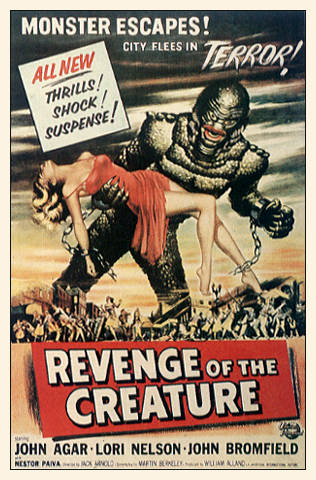
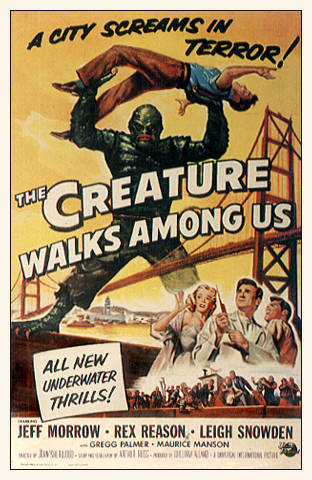
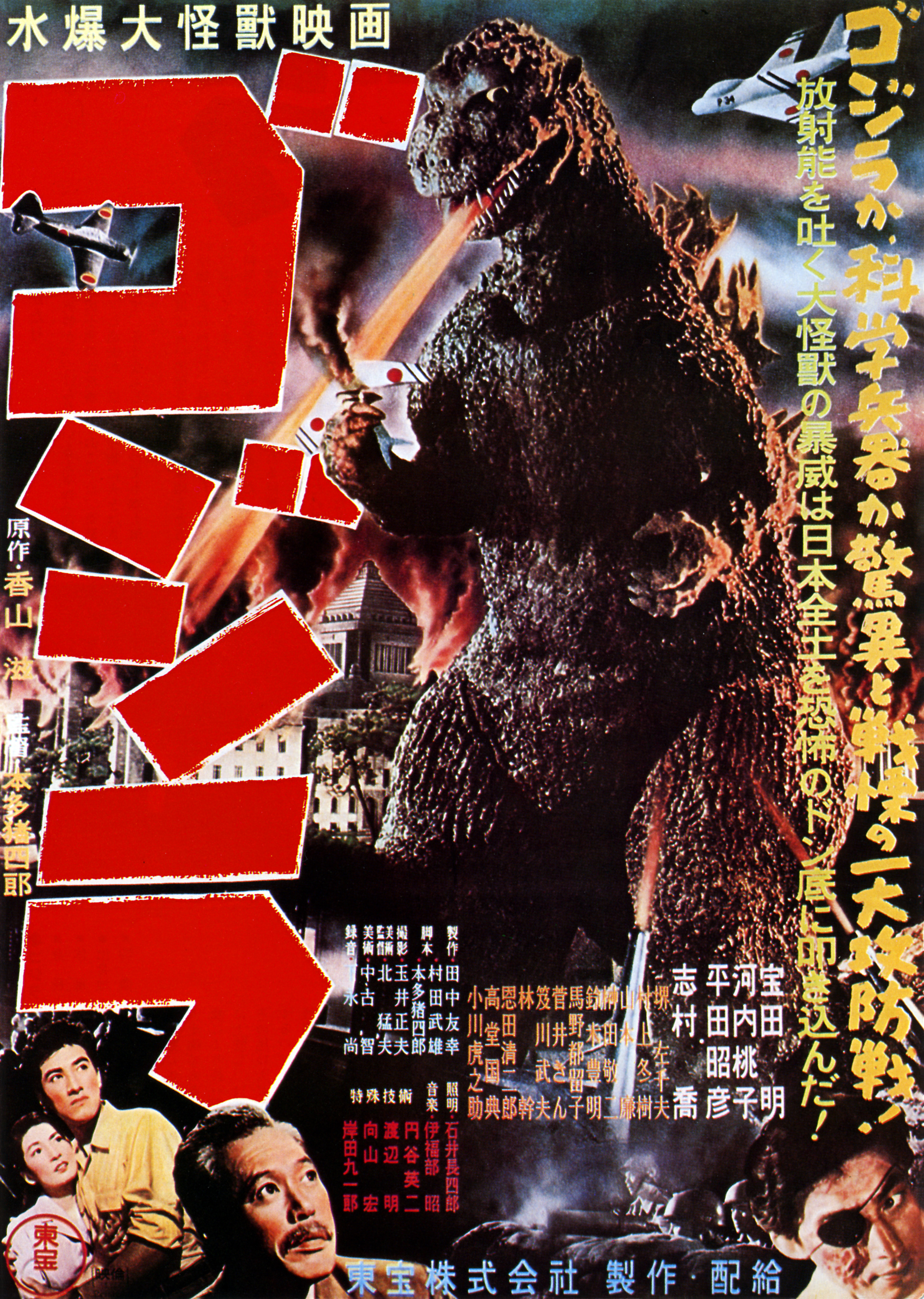 GOJIRA
GOJIRA
- Rating

- Film Production Credits
-
Release Date: 1954 (US release 1956) Produced by: Toho Film (Eiga) Co. Ltd. Directed by: Ishiro Honda Other: - Cast of Characters
-
Akira Takarada Hideto Ogata Momoko Kochi Emiko Yamane Akihiko Hirata Dr. Daisuke Serizawa Takashi Shimura Prof. Kyohei Yamane - Synopsis and Commentary
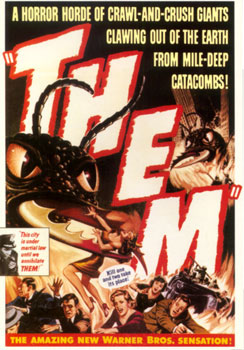 THEM!
THEM!
- Rating

- Film Production Credits
-
Release Date: 1954 Produced by: Warner Brothers Directed by: Gordon Douglas Other: - Cast of Characters
-
James Whitmore Police Sergeant Ben Peterson Edmund Gwynn Dr. Harold Medford Joan Weldon Dr. Patricia Medford James Arness Agent Robert Graham - Synopsis and Commentary
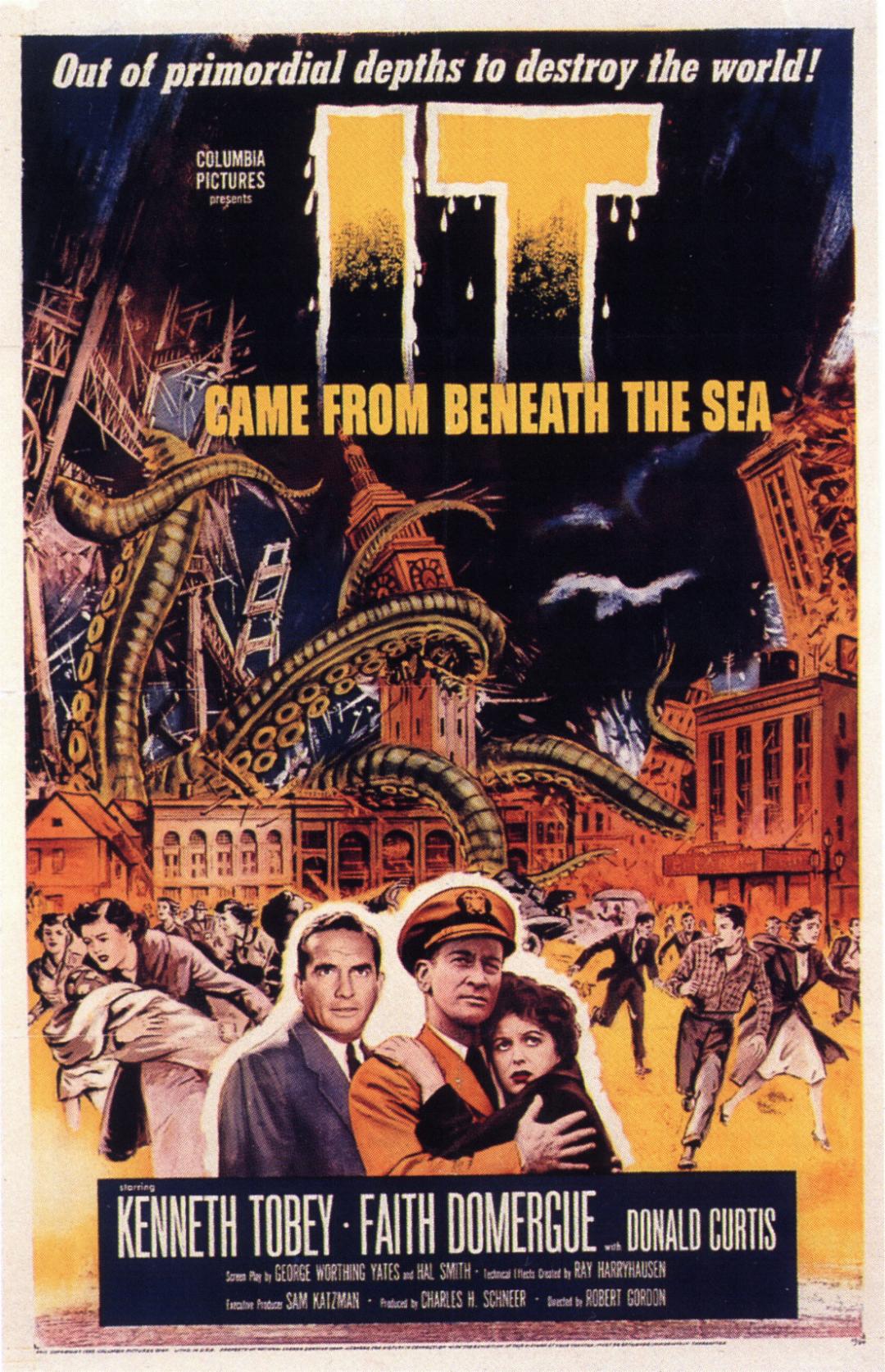 IT CAME FROM BENEATH THE SEA
IT CAME FROM BENEATH THE SEA
- Rating

- Film Production Credits
-
Release Date: 1955 Produced by: Sam Katzman and Charles H. Schneer Directed by: Robert Gordon Other: Special Effects by Ray Harryhausen - Cast of Characters
-
Kenneth Tobey Commander Pete Mathews Faith Domergue Prof. Lesley Joyce Donald Curtis Prof. John Carter Ian Keith Admiral Burns Dean Maddux, Jr Admiral Norman - Synopsis and Commentary
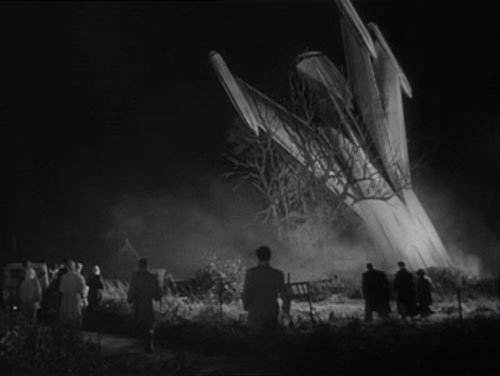 THE QUATERMASS XPERIMENT
THE QUATERMASS XPERIMENT
- Rating

- Film Production Credits
-
Release Date: 1955 Produced by: Hammer Film Productions, Ltd. Directed by: Val Guest Other: From the BBC teleplay
by Nigel Kneale - Cast of Characters
-
Brian Donlevy Prof. Bernard Quatermass Jack Warner Inspector Lomax Richard Wordsworth Victor Caroon Margia Dean Judith Caroon Thora Hird Rosemary Elizabeth Rigly David King-Wood Dr. Gordon Briscoe Lionel Jeffries Blake - Synopsis and Commentary
 TARANTULA!
TARANTULA!
- Rating

- Film Production Credits
-
Release Date: 1955 Produced by: Universal International
(William Alland)Directed by: Jack Arnold Other: - Cast of Characters
-
John Agar Dr. Matt Hastings Mara Corday Stephanie ("Steve") Clayton Leo G. Carroll Prof. Gerald Deemer Nestor Paiva Sheriff Jack Andrews - Synopsis and Commentary
 FORBIDDEN PLANET
FORBIDDEN PLANET
- Rating

- Film Production Credits
-
Release Date: 1956 Produced by: Metro-Goldwyn-Mayer Directed by: Fred M. Wilcox Other: - Cast of Characters
-
Walter Pidgeon Dr. Edward Morbius Leslie Nielsen Commander John J. Adams Anne Frances Altaira Morbius Warren Stevens Lt. 'Doc' Ostrow Earl Holliman James Dirocco - Synopsis and Commentary
 INVASION OF THE BODY SNATCHERS
INVASION OF THE BODY SNATCHERS
- Rating

- Film Production Credits
-
Release Date: 1956 Produced by: Allied Artists (Walter Wanger) Directed by: Don Siegel Other: From the serialized short
novel by Jack Finney - Cast of Characters
-
Kevin McCarthy Dr. Miles J. Bennell Dana Wynter Becky Driscoll Larry Gates Dr. Dan Kauffman King Donovan Jack Belicec Carolyn Jones Theodora Belicec Whit Bissell Dr. Hill - Synopsis and Commentary
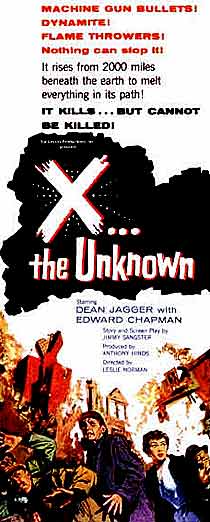 X - THE UNKNOWN
X - THE UNKNOWN
- Rating

- Film Production Credits
-
Release Date: 1956 Produced by: Hammer Film Productions, Ltd.
(Michael Carreras & Anthony Hinds)Directed by: Leslie Norman Other: Screenplay by Jimmy Sangster - Cast of Characters
-
Dean Jagger Dr. Adam Royston Edward Chapman John Elliott Leo McKern Inspector McGill Anthony Newley Lance Corporal "Spider" Webb Michael Ripper Serjeant Harry Grimsdyke - Synopsis and Commentary
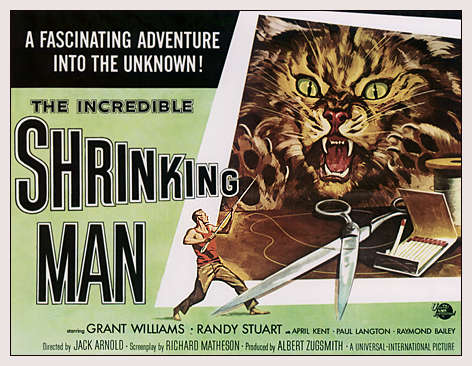 THE INCREDIBLE SHRINKING MAN
THE INCREDIBLE SHRINKING MAN
- Rating

- Film Production Credits
-
Release Date: 1957 Produced by: Universal International Directed by: Jack Arnold Other: Novel & screenplay
by Richard Matheson - Cast of Characters
-
Grant Williams Scott Carey Randy Stuart Louise Carey April Kent Clarice Raymond Bailey Dr. Thomas Silver William Schallert Dr. Arthur Bramson - Synopsis and Commentary
 THE BLOB
THE BLOB
- Rating

- Film Production Credits
-
Release Date: 1958 Produced by: Jack H. Harris Directed by: Irving S. Yeaworth, Jr. Other: - Cast of Characters
-
Steve McQueen Steve Andrews Aneta Corsaut Jane Martin Earl Rowe Lt. Dave Stephen Chase Dr. Hallen John Benson Sgt. Bert Olin Howlin Old Man - Synopsis and Commentary
 THE FLY
THE FLY
- Rating

- Film Production Credits
-
Release Date: 1958 Produced by: 20th Century Fox (Kurt Neumann) Directed by: Kurt Neumann Other: Screenplay by James Clavell - Cast of Characters
-
Al Hedison Andre Delambre Vincent Price Francois Delambre Herbert Marshall Inspector Charas Patricia Owens Helene Delambre Charles Herbert Philippe Delambre - Synopsis and Commentary
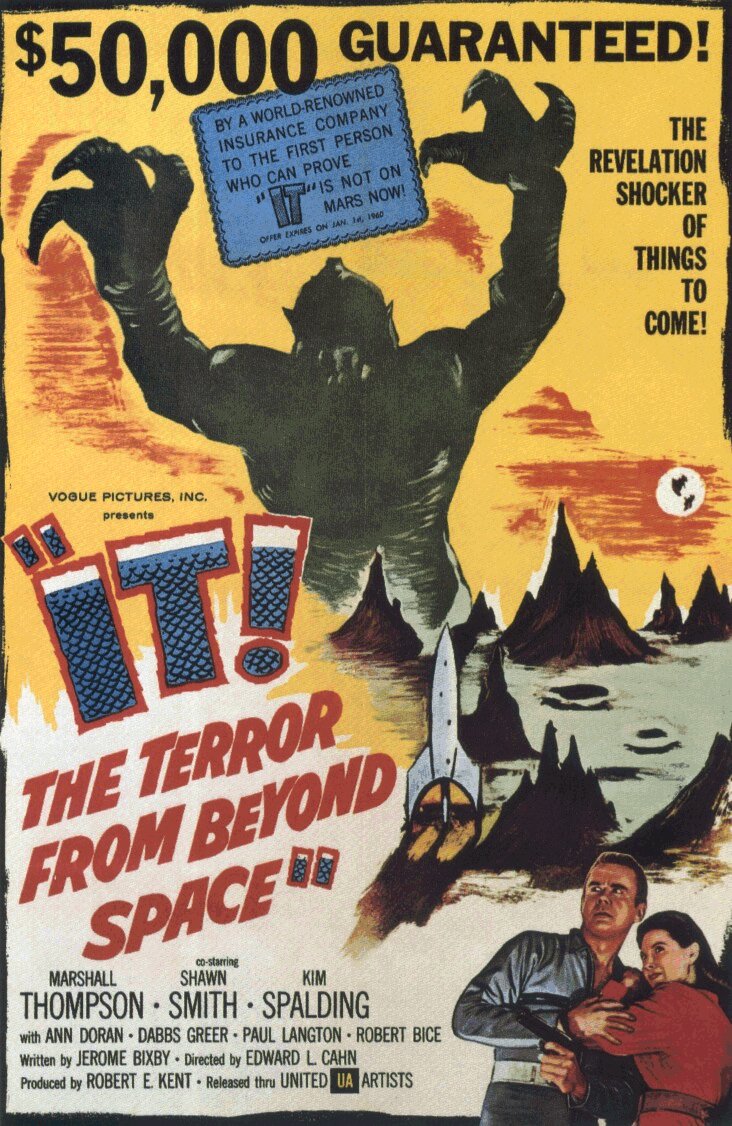 IT! THE TERROR FROM BEYOND SPACE
IT! THE TERROR FROM BEYOND SPACE
- Rating
- Film Production Credits
-
Release Date: 1958 Produced by: Vogue Pictures Directed by: Edward L. Cahn Other: - Cast of Characters
-
Marshall Thompson Col. Edward Carruthers Shawn Smith Ann Anderson Kim Spaulding Col. Van Heusen Ann Doran Dr. Mary Royce Dabbs Greer Eric Royce Ray Corrigan It - Synopsis and Commentary
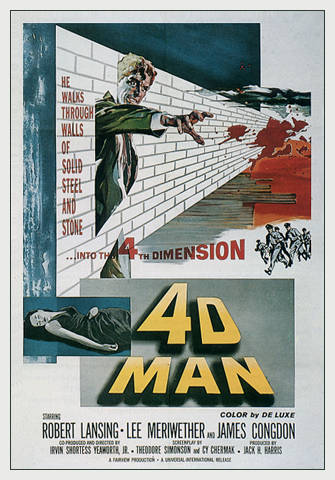 4D MAN
4D MAN
- Rating

- Film Production Credits
-
Release Date: 1959 Produced by: Jack H. Harris Directed by: Irvin S. Yeaworth, Jr. Other: - Cast of Characters
-
Robert Lansing Dr. Scott Nelson Lee Meriwether Linda Davis James Congdon Dr. Tony Nelson Robert Strauss Roy Parker - Synopsis and Commentary
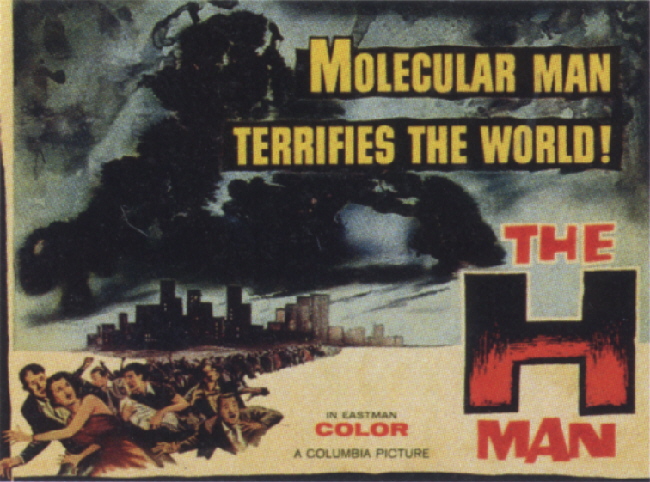 THE H-MAN (Bijo to Ekitai-ningen)
THE H-MAN (Bijo to Ekitai-ningen)
- Rating

- Film Production Credits
-
Release Date: 1959 Produced by: Toho Film (Eiga) Co. Ltd. Directed by: Ishiro Honda Other: - Cast of Characters
-
Yumi Shirakawa Chikako Arai Kenji Sahara Dr. Masada Akihiko Harata Inspector Tominaga Koreya Senda Dr. Maki Makoto Sato Uchida - Synopsis and Commentary
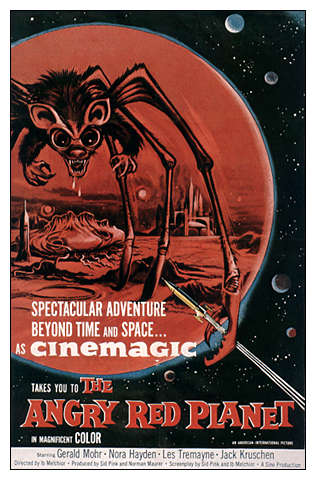 THE ANGRY RED PLANET
THE ANGRY RED PLANET
- Rating

- Film Production Credits
-
Release Date: 1960 Produced by: American International Pictures Directed by: Ib Melchior Other: - Cast of Characters
-
Gerald Moore Colonel Thomas O'Bannion Naura Hayden Dr. "Irish" Ryan Les Tremayne Prof. Theodore Gettlell Jack Kruschen CWO Sam Jacobs - Synopsis and Commentary
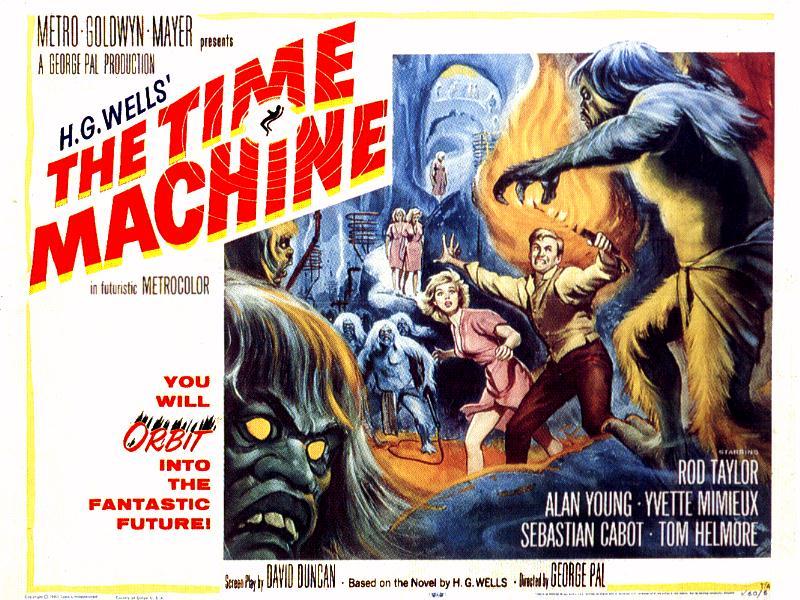 THE TIME MACHINE
THE TIME MACHINE
- Rating

- Film Production Credits
-
Release Date: 1960 Produced by: George Pal /
Metro-Goldwyn-MayerDirected by: George Pal Other: Novel by H. G. Wells - Cast of Characters
-
Rod Taylor George Wells Yvette Mimieux Weena Alan Young David Filby / James Filby Sebastian Cabot Dr. Phillip Hillyer Whit Bissell Walter Kemp - Synopsis and Commentary
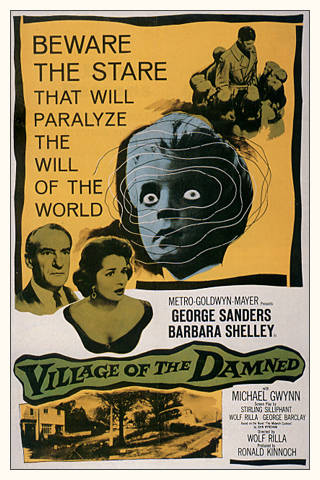 VILLAGE OF THE DAMNED
VILLAGE OF THE DAMNED
- Rating

- Film Production Credits
-
Release Date: 1960 Produced by: Metro-Goldwyn-Mayer Directed by: Wolf Rilla Other: Novel by John Wyndham - Cast of Characters
-
George Sanders Prof. Gordon Zellaby Barbara Shelley Anthea Zellaby Martin Stephens David Zellaby Michael Gwynn Major Alan Bernard Laurence Naismith Dr. Willers - Synopsis and Commentary
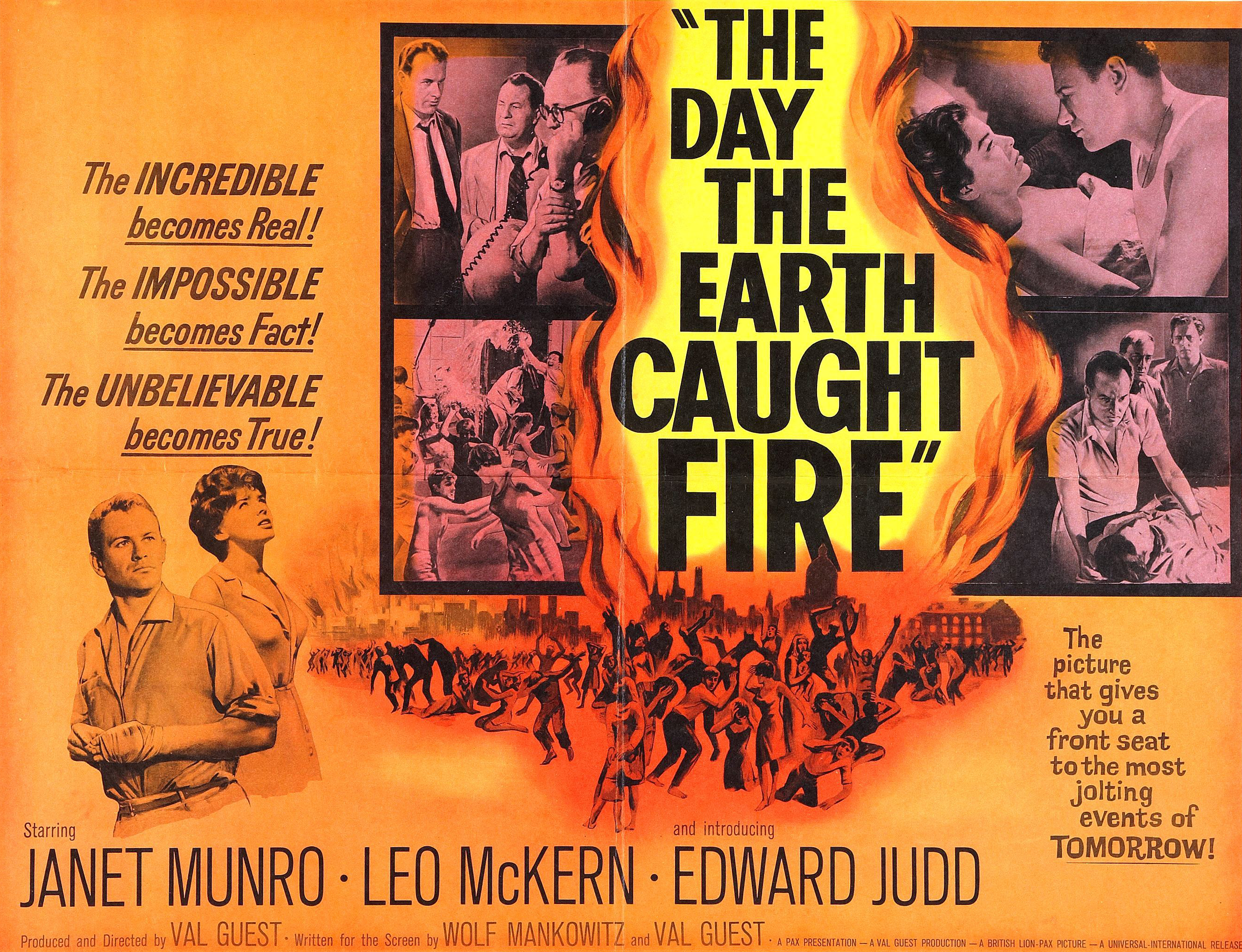 THE DAY THE EARTH CAUGHT FIRE
THE DAY THE EARTH CAUGHT FIRE
- Rating

- Film Production Credits
-
Release Date: 1961 Produced by: Val Guest Directed by: Val Guest Other: Screenplay by Wolf Mankowitz and Val Guest - Cast of Characters
-
Janet Munro Jeannie Craig Edward Judd Peter Stenning Leo McKern Bill Maguire Arthur Christiansen "Jeff" Jefferson Michael Goodliffe "Jacko" Jackson - Synopsis and Commentary
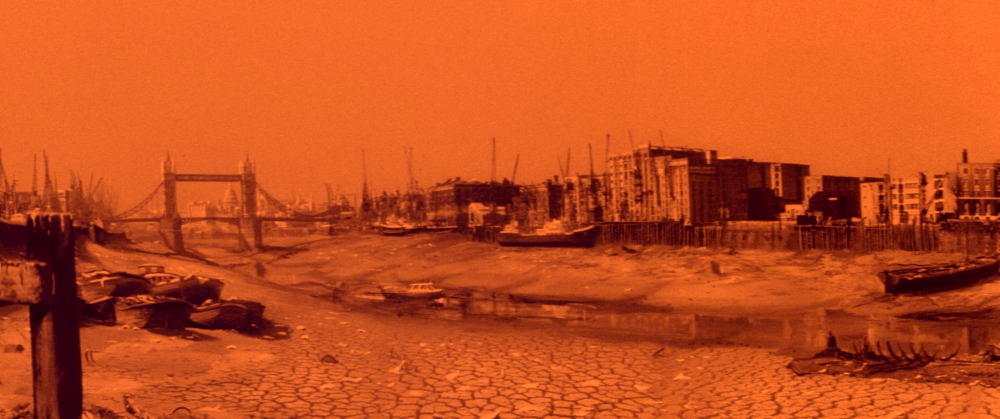
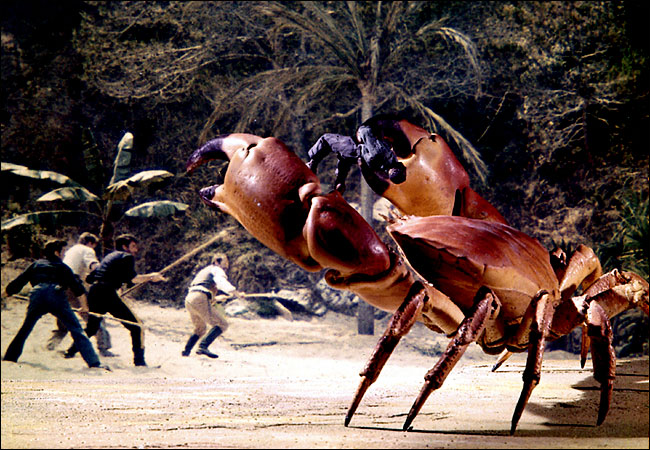 MYSTERIOUS ISLAND
MYSTERIOUS ISLAND
- Rating

- Film Production Credits
-
Release Date: 1961 Produced by: Charles H. Schneer Directed by: Cy Endfield Other: Novel by Jules Verne - Cast of Characters
-
Michael Craig Captain Cyrus Harding Joan Greenwood Lady Mary Fairchild Michael Callan Herbert Brown Gary Merrill Gideon Spilitt Herbert Lom Captain Nemo Beth Rogan Elena Fairchild Percy Herbert Sergeant Pencroft Dan Jackson Corporal Neb Nugent - Synopsis and Commentary
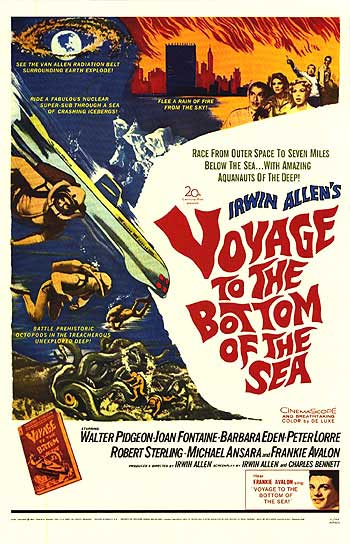 VOYAGE TO THE BOTTOM OF THE SEA
VOYAGE TO THE BOTTOM OF THE SEA
- Rating

- Film Production Credits
-
Release Date: 1961 Produced by: Irwin Allen Directed by: Irwin Allen Other: - Cast of Characters
-
Walter Pidgeon Admiral Harriman Nelson Joan Fontaine Dr. Susan Hiller Peter Lorre Commodore Lucius Emery Barbara Eden Lieutenant Cathy Connors Robert Sterling Captain Lee Crane Michael Ansara Miguel Alvarez Frankie Avalon LTJG Danny Romano - Synopsis and Commentary
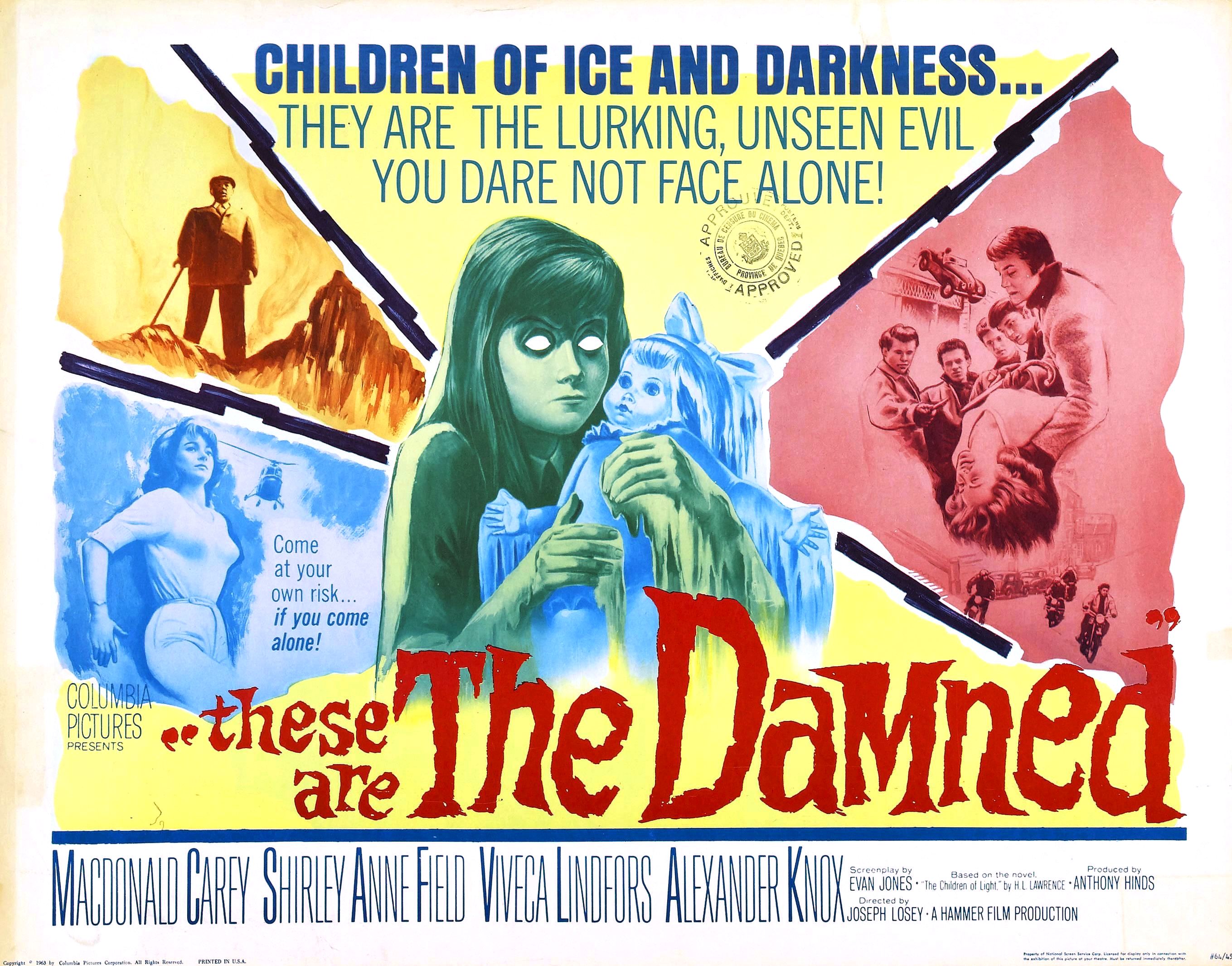 THESE ARE THE DAMNED
THESE ARE THE DAMNED
- Rating

- Film Production Credits
-
Release Date: 1963 Produced by: Hammer Films Directed by: Joseph Losey Other: Based on the novel, The Children of Light, by H. L. Lawrence - Cast of Characters
-
MacDonald Carey Simon Wells Shirley Anne Field Joan Viveca Lindfors Freya Neilson Oliver Reed King Alexander Knox Bernard - Synopsis and Commentary
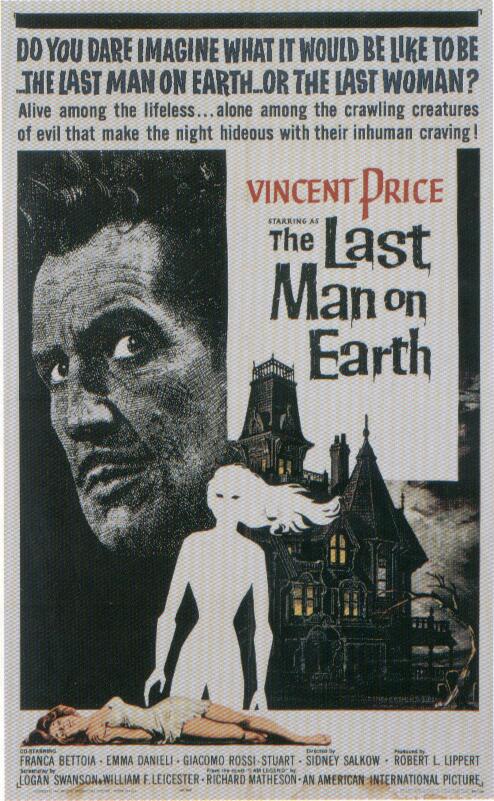 THE LAST MAN ON EARTH
THE LAST MAN ON EARTH
- Rating

- Film Production Credits
-
Release Date: 1964 Produced by: Produzioni la Regina / American International Pictures Directed by: Ubaldo Ragona & Sydney Salkow Other: Novel by Richard Matheson - Cast of Characters
-
Vincent Price Dr. Robert Morgan Franca Bettoia Ruth Collins Emma Danieli Virginia Morgan Giacomo Rosso-Stuart Ben Cortman Umberto Raho Dr. Mercer - Synopsis and Commentary
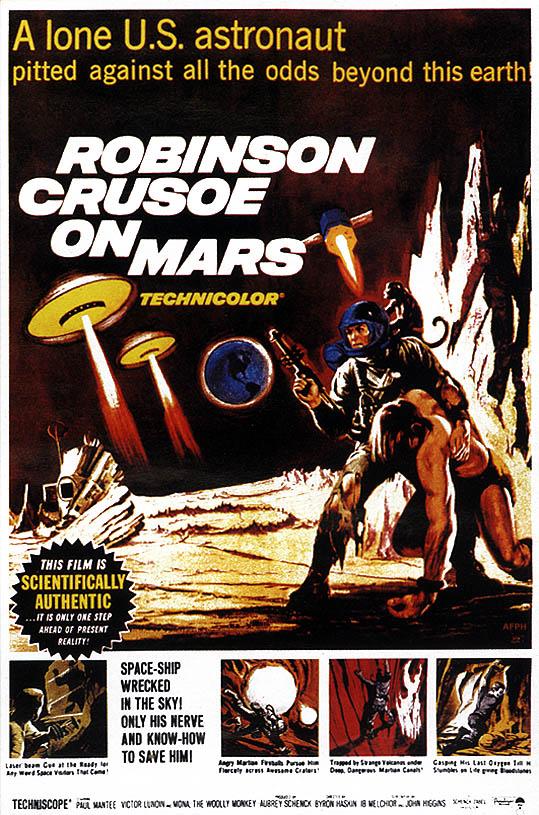 ROBINSON CRUSOE ON MARS
ROBINSON CRUSOE ON MARS
- Rating

- Film Production Credits
-
Release Date: 1964 Produced by: Aubrey Schenk Productions Directed by: Byron Haskin Other: - Cast of Characters
-
Paul Mantee CMDR Christopher "Kit" Draper Victor Lundin Friday Adam West COL Dan McReady Mona Monkey - Synopsis and Commentary
Copyright 2000 - 2020 -- All Rights Reserved